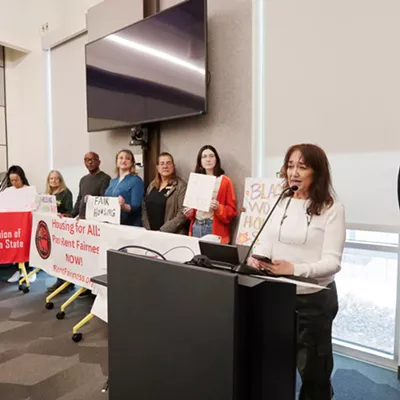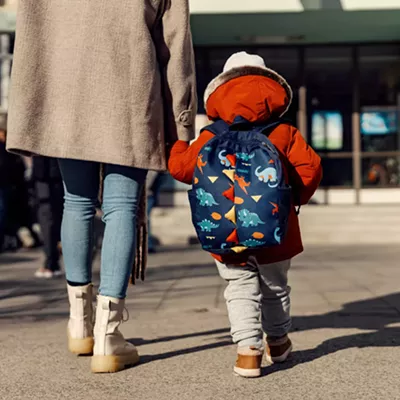Dolls of diplomacy
[
{
"name": "Broadstreet - Instory",
"component": "25846487",
"insertPoint": "4",
"requiredCountToDisplay": "4"
},{
"name": "Broadstreet - Empower Local",
"component": "27852456",
"insertPoint": "8",
"requiredCountToDisplay": "8"
},{
"name": "Broadstreet - Instory",
"component": "25846487",
"insertPoint": "12",
"requiredCountToDisplay": "12"
},{
"name": "Broadstreet - Instory - 728x90 / 970x250",
"component": "27852677",
"insertPoint": "18",
"requiredCountToDisplay": "18"
},{
"name": "Broadstreet - Instory",
"component": "25846487",
"insertPoint": "5th",
"startingPoint": "23",
"requiredCountToDisplay": "24",
"maxInsertions": 100
}
]
& & Sheri Boggs & & & &
Toys are as much a part of any given culture as its alphabet, customs, art and music. The anthropomorphic desire to imbue cloth, clay, bits of yarn and beads with human characteristics crosses the boundaries of nationality, race, language and even age. One of the most remarkable things about visiting the Japanese Cultural Center at Mukogawa is not only the number of toys -- there are tops, little wooden playthings, kites and even a beckoning kitty figure -- but the number of dolls as well. Patrice Pendell, activity coordinator at the center, explains that dolls are such a significant part of Japanese culture that they have their own holiday in Japan, Hina Matsuri, which is celebrated in early March.
"Not only is this a huge holiday in Japan," says Pendell, "but it has been celebrated for literally a thousand years."
Small wonder then, that dolls became such suitable ambassadors between Japan and America in 1927 through the work of one man, Dr. Sidney Gulick.
"It was very popular," says Michiko Takaoka, director of the Japanese Cultural Center. "Americans wanted to be involved, and so they did."
Called simply the Doll Plan, Gulick's idea was to send thousands of blue-eyed American dolls to Japan in a gesture of goodwill and friendship. More than 2.7 million Americans -- elementary classes, church groups, ladies societies and boy scouts -- participated, and in early February of 1927, 12,739 dolls were sent to Japan in time to celebrate Hina Matsuri.
"Dr. Gulick said, 'We know that the human exchange is best,' " says Takaoka. "But the next best thing is to send a doll."
The Japanese recipients of the Doll Plan were so touched by the gesture that in turn, 2.6 million Japanese contributed to the commissioning of 58 oversize (32 inches tall), formally dressed dolls, which were sent to the United States in time for Christmas. At least one doll was sent to each state, including Miss Tokushima, which was sent to Spokane and currently resides in the Cheney Cowles Museum's permanent collection.
Although both exchanges of dolls came with hundreds of letters from Japanese and American schoolchildren to each other, the cross-cultural friendship was not to last. The Cultural Center has worked hard to track down the whereabouts of the friendship dolls, and the fates of some are not pretty.
"During the war, many of the dolls were broken and are gone forever," says Takaoka, showing me a photograph of one of the American dolls, her clothes torn and her face cracked. "This one, she was abused."
In 1993, the Cultural Center revived the custom, with the help of Mukogawa's Women's University in Nishinomiya, Spokane's sister city. The people of Nishinomiya and the surrounding region of Hyogo Prefecture, Washington's sister state, donate money and dolls to the program, which are then sent to schools, hospitals and organizations across the United States.
"We've been sending new dolls out to schools in all 50 states," Pendell remarks. "So far we've sent out more than 800 dolls."
For American children, the dolls are a remarkable window to view another culture.
"The kids are really curious about the people who sent them this doll," says Pendell. "They want to know why and know more about where the doll comes from."
In turn, the American students send American dolls back to Japan, and the Cultural Center has several photo albums filled with pictures of the U.S. Ambassadors, many of whom have bright red yarn hair and bright black eyes.
"Raggedy Ann is by far the most popular," says Takaoka, flipping through an album that also includes a large number of the popular American Girls series of dolls. "There are not too many dolls like Raggedy Ann in Japan, they are mostly Barbie-type dolls."
The tradition comes full circle every March when the Cultural Center invites local children to take part in the Mukogawa's Festival of Dolls. In addition to local dignitaries being present, teachers from doll recipient states as far away as Rhode Island and Kentucky come to visit as well. Local kids often bring their own dolls to take part in the pageantry and history of the event.
"Exchanges like this really reach kids. It gets the kids to wondering where did these dolls come from, and stimulates study about Japan," Pendell pauses and adds, "And it gets the Japanese students curious about America. They might get a doll from Wyoming and then look at a map and wonder, 'Where is Wyoming?' "
Toys are as much a part of any given culture as its alphabet, customs, art and music. The anthropomorphic desire to imbue cloth, clay, bits of yarn and beads with human characteristics crosses the boundaries of nationality, race, language and even age. One of the most remarkable things about visiting the Japanese Cultural Center at Mukogawa is not only the number of toys -- there are tops, little wooden playthings, kites and even a beckoning kitty figure -- but the number of dolls as well. Patrice Pendell, activity coordinator at the center, explains that dolls are such a significant part of Japanese culture that they have their own holiday in Japan, Hina Matsuri, which is celebrated in early March.
"Not only is this a huge holiday in Japan," says Pendell, "but it has been celebrated for literally a thousand years."
Small wonder then, that dolls became such suitable ambassadors between Japan and America in 1927 through the work of one man, Dr. Sidney Gulick.
"It was very popular," says Michiko Takaoka, director of the Japanese Cultural Center. "Americans wanted to be involved, and so they did."
Called simply the Doll Plan, Gulick's idea was to send thousands of blue-eyed American dolls to Japan in a gesture of goodwill and friendship. More than 2.7 million Americans -- elementary classes, church groups, ladies societies and boy scouts -- participated, and in early February of 1927, 12,739 dolls were sent to Japan in time to celebrate Hina Matsuri.
"Dr. Gulick said, 'We know that the human exchange is best,' " says Takaoka. "But the next best thing is to send a doll."
The Japanese recipients of the Doll Plan were so touched by the gesture that in turn, 2.6 million Japanese contributed to the commissioning of 58 oversize (32 inches tall), formally dressed dolls, which were sent to the United States in time for Christmas. At least one doll was sent to each state, including Miss Tokushima, which was sent to Spokane and currently resides in the Cheney Cowles Museum's permanent collection.
Although both exchanges of dolls came with hundreds of letters from Japanese and American schoolchildren to each other, the cross-cultural friendship was not to last. The Cultural Center has worked hard to track down the whereabouts of the friendship dolls, and the fates of some are not pretty.
"During the war, many of the dolls were broken and are gone forever," says Takaoka, showing me a photograph of one of the American dolls, her clothes torn and her face cracked. "This one, she was abused."
In 1993, the Cultural Center revived the custom, with the help of Mukogawa's Women's University in Nishinomiya, Spokane's sister city. The people of Nishinomiya and the surrounding region of Hyogo Prefecture, Washington's sister state, donate money and dolls to the program, which are then sent to schools, hospitals and organizations across the United States.
"We've been sending new dolls out to schools in all 50 states," Pendell remarks. "So far we've sent out more than 800 dolls."
For American children, the dolls are a remarkable window to view another culture.
"The kids are really curious about the people who sent them this doll," says Pendell. "They want to know why and know more about where the doll comes from."
In turn, the American students send American dolls back to Japan, and the Cultural Center has several photo albums filled with pictures of the U.S. Ambassadors, many of whom have bright red yarn hair and bright black eyes.
"Raggedy Ann is by far the most popular," says Takaoka, flipping through an album that also includes a large number of the popular American Girls series of dolls. "There are not too many dolls like Raggedy Ann in Japan, they are mostly Barbie-type dolls."
The tradition comes full circle every March when the Cultural Center invites local children to take part in the Mukogawa's Festival of Dolls. In addition to local dignitaries being present, teachers from doll recipient states as far away as Rhode Island and Kentucky come to visit as well. Local kids often bring their own dolls to take part in the pageantry and history of the event.
"Exchanges like this really reach kids. It gets the kids to wondering where did these dolls come from, and stimulates study about Japan," Pendell pauses and adds, "And it gets the Japanese students curious about America. They might get a doll from Wyoming and then look at a map and wonder, 'Where is Wyoming?' "
















